A Wining Cost Estimate
That Helps You To Win More Pool Construction Projects

Insulators are products that function to keep a structure or object warm or cool. There are a variety of insulation varieties available, each with its own set of strengths and weaknesses.
Insulation Material | Advantages | Disadvantages |
|---|---|---|
Fiberglass | Easy to install | Prone to air leaks and loose fibers |
Spray foam | Creates an air-tight seal | Expensive |
Cellulose | Environmentally friendly | Requires expert installation |
Mineral wool | Fire-resistant | Less efficient than other types of insulators |
Polyurethane foam | Has high thermal resistance | Costly installation process |
Apart from the mainstream insulators, some other insulation types include radiant barriers, reflective insulation, and rigid foam board insulation. These specialized insulators provide their unique features to the structure in which they are installed.
A friend of mine upgraded his insulation using cellulose to entertain guests in his basement during hot summers while still keeping them in the natural cool environment. He relayed that the process was time-consuming, requiring expert installation and attention to detail. In the end, though, it proved extremely worthwhile for his frequent house parties.
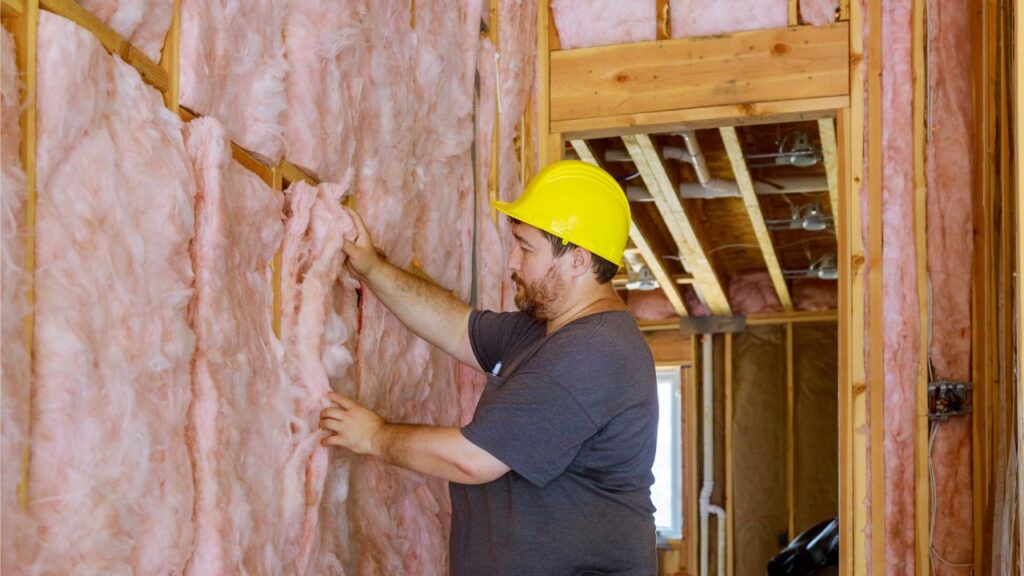
Who needs a therapist when you can just wrap yourself up in fiberglass insulation and block out all your problems?
Fiberglass insulation has a fabric-like feel and is made of fine glass fibers, making it heat resistant. It’s easy to install, coming in rolls, batts, or loose-fill. Plus, it has a high R-value which measures its heat flow resistance. It’s light weight and effective – but wear protective gear when installing it. When cutting, measure twice – better to have extra than not enough for complete coverage.
Cellulose Insulation is here! It is made of eighty percent recycled paper and treated with chemicals to resist fire. It is a more durable and cheaper option than fiberglass insulation. It prevents air leakage, reduces noise pollution, and provides better energy efficiency. Plus, it has a higher R-value, so it provides better heat resistance than fiberglass insulation. And, due to its density, it tends to perform well in soundproofing. The Department of Energy (DOE) claims that just adding cellulose insulation in attics can lower heating costs by twenty percent. So, why not get your foam-coffee-like insulation today?
Spray foam insulation is a high-performance insulating material that’s sprayed onto surfaces. It offers airtight and waterproof protection, making it a favourite amongst homeowners and contractors.
Types of spray foam include open-cell and closed-cell. Open-cell is cheaper but less dense, while closed-cell is more expensive but denser and better suited for outdoor use.
If you want to ensure your home is efficiently insulated and your energy bills are kept low, go for spray foam insulation. Make your space more comfortable and cost-effective with this great choice.
I’m sure you can imagine spray foam insulation as a sunscreen for your home – it reflects the sun’s rays and stops your house from getting too hot.

Radiant Barrier technology is an effective way to reflect heat. It has become popular lately!
Let’s look at the pros and cons of using this insulation:
Pros:
Cons:
One cool thing about using Radiant Barrier Insulation? It reduces moisture, which helps prevent mold and keeps your building in good shape.
Pro tip: For best results, make sure to leave space between this insulation and any other insulation you have.
Insulation is like a relationship – the higher the R-value, the better the cuddles!
As a vital aspect of insulation, the ability to retain heat depends on the materials’ R-Value and Density. Simply put, the R-Value measures the insulating material’s ability to resist heat flow, with a higher R-Value indicating better insulation. Meanwhile, Density refers to how tightly packed an insulating material is, with denser materials trapping more heat.
The table below summarizes the R-Value and Density of different insulation materials commonly used in homes.
Insulation Material | R-Value per inch | Density (lbs./ft³) |
|---|---|---|
Fiberglass Batt | 2.2 – 4.3 | 0.5 – 1.5 |
Cellulose Loose-Fill | 3.2 – 3.8 | 1.5 – 2.0 |
Spray Foam | 3.5 – 6.5 | 1.0 – 2.0 |
Mineral Wool Batt | 3.0 – 4.0 | 1.7 – 2.3 |
It is crucial to note that the material’s thickness also plays a significant role in its insulation capacity. Therefore, choosing an insulation material with the highest R-Value and Density might not always be the most efficient option.
Besides, it is worth mentioning that insulating your home with eco-friendly materials not only benefits the environment but also provides a healthier living condition for you and your family. Consider materials such as wool, cotton, or cellulose that come from renewable sources and are free from harmful chemicals.
A homeowner once installed spray foam insulation in their attic but noticed a strong odor throughout the house. After further investigation, it was discovered that the spray foam contained harmful chemicals that posed a threat to their family’s health. The family then had to replace the insulation with eco-friendly materials. This story highlights the importance of researching and carefully selecting insulation material for your home.
Discovering the R-Value is like finding out the GPA of your home’s insulation – and let’s hope it’s not on academic probation.
R-Value is a measure of a material’s resistance to heat flow. It helps to calculate insulation effectiveness for buildings. Work it out by dividing the thickness by thermal conductivity.
The density of a material affects its performance as insulation. It’s important to understand this relationship. Higher density means more airflow resistance, but can be less effective for thin walls.
Choosing insulation products? R-Value should be taken into account. Optimal thickness and density depend on environmental conditions and building codes.
In 1975, President Ford proposed a law to label insulation products with R-Value info. This helps consumers make the best choices. It’s still in effect today.
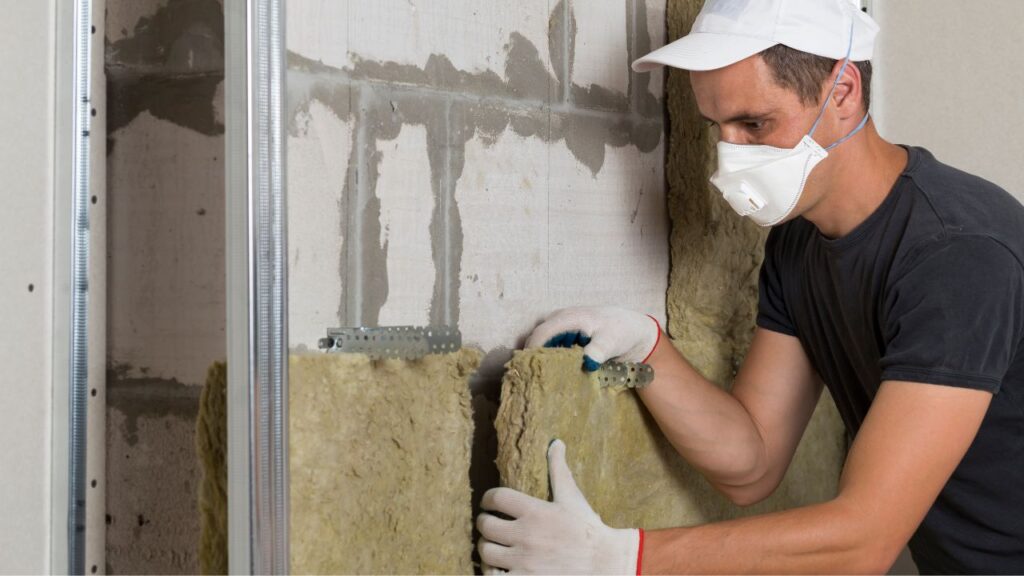
Insulation density: Get the most out of your energy bill – choose wisely!
Insulation and density go together like peanut butter and jelly. Density has a major impact on insulation. Low density (1-2 lbs/ft3) provides better sound absorption and cost-efficiency with an R-value of 2.5-3.5. Medium density (2-3 lbs/ft3) has average thermal performance, durability, and cost with an R-value of 3.5-4.2. High density (4-6 lbs/ft3) gives the highest R-value of 4.2-6.5, as well as increased air sealing, thermal bridging reduction, and a longer lifespan.
However, insulation is not only affected by density. Other factors include material used, thickness, and installation location. Increasing density level can improve your energy efficiency by retaining heat or cold within a room and reducing energy consumption. Don’t forget: moisture-resistant materials help keep your walls safe and sound!
Proper insulation material is key to prevent moisture build-up in your home. Moisture can result in mold growth, which is a serious health concern and can greatly lower air quality. Moisture can also damage your home’s structure and decrease its value.
To prevent moisture build-up, it is important to choose insulation materials with high water resistance. Closed-cell foam insulation is an excellent option as it is impermeable to water and can prevent moisture from penetrating your home. Other options include spray foam insulation and rigid foam board insulation.
Additionally, it is important to seal all gaps and cracks in your home’s structure to prevent air or moisture leakage. This can be done using caulking or weatherstripping. By preventing moisture build-up, you not only protect your home and family’s health but also save on repair and maintenance costs.
Vapor retarders: keeping moisture out of your home, and your ex out of your life.
Vapour barriers are airtight membranes that help prevent moisture from penetrating walls and ceilings. This stops damage to the building materials caused by water condensation.
Not only that, but they also keep buildings energy-efficient. This is achieved by preventing temperature changes due to moisture.
When installing a vapour retarder, caution is key. An incorrectly installed sheet can lead to humidity build-up, causing rot, mold, and mildew.
It’s important to use HVAC companies with experienced professionals for moisture-resistant installations. Otherwise, you risk damaging your reputation and finances.
To stay dry and cozy, like a burrito in foil, opt for waterproof insulation options!
Water-resistant insulation is essential for structures exposed to moisture. There are a variety of materials which can be used for this purpose. Some common materials are: Polyurethane (PUR), Expanded Polystyrene (EPS) and Extruded Polystyrene (XPS).
It’s important to note that there may be other options depending on the project. Maintaining waterproof insulation involves more than just installation. Regular inspections and maintenance by professionals can help identify any potential susceptibility to leakage.
A report titled “A Review of Moisture Safety Risks Associated with Buildings” published by ResearchGate states that moisture safety hazards pose significant risks to human health and property integrity. Therefore, when selecting an appropriate insulation material, it is critical to ensure its ability to withstand moisture efficiently.
Budgeting for moisture resistance is like swimming in a pool full of holes – it’ll require a lot of work and can be costly.

When it comes to managing expenses while selecting the appropriate insulation for your home, it is essential to understand the financial aspect. Without proper consideration of Cost and Budgeting, it can be easy to overspend and destabilize your personal finances.
Prepare a comprehensive budget, including the cost of insulation materials and labour and other necessary installation expenses.
It is imperative to note that while the upfront cost of high-quality insulation may seem daunting, it is worth the investment. Premium insulation can help keep your home at a comfortable temperature throughout the year, saving you money on energy bills and reducing your carbon footprint.
A homeowner once shared how they installed low-cost insulation in their home without realizing the materials were inefficient. After experiencing a steep increase in energy bills, they invested in high-quality insulation and significantly reduced their monthly expenses. Choosing the right insulation may cost you upfront, but trust me, you’ll save enough to buy a lifetime supply of dark humour.
Considering expenses? It’s essential to ponder immediate costs versus long-term savings. Investing money today can save big amounts in the future. Let’s compare upfront costs and long-term savings:
Upfront Costs | Long-Term Savings | |
|---|---|---|
Example 1 | $5,000 | $50/month |
Example 2 | $500 | $10/month |
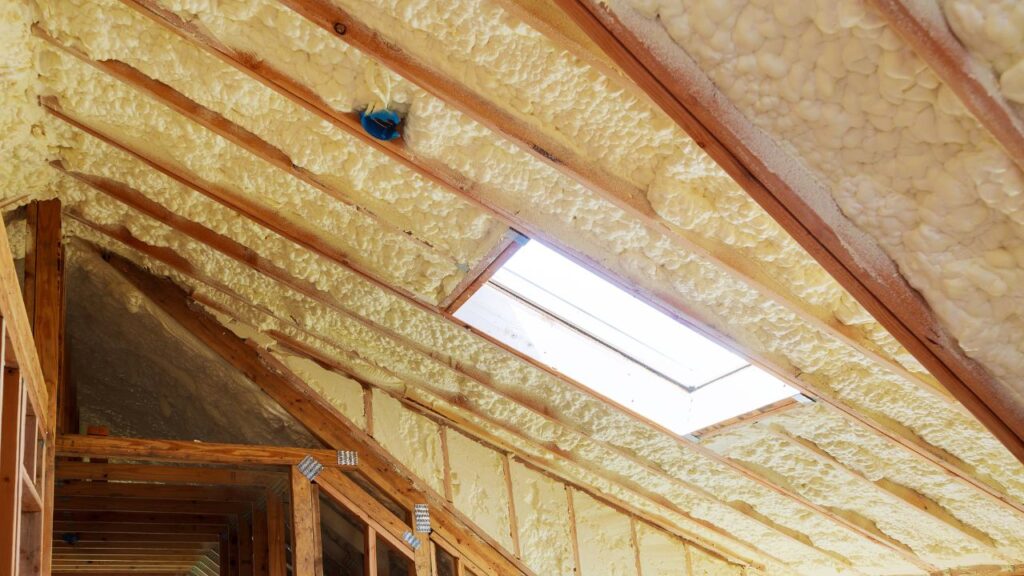
Example 1 has a bigger cost now but more savings later. Both scenarios have pros and cons so it’s important to factor in personal targets and financial plans.
Focus on investments that match long-term financial objectives, not quick-fix strategies or short-term trends. A friend of mine initially picked low-cost loft insulation – but energy bills were still high. So, they invested in a more expensive but more effective insulation solution. The upfront cost was higher, but monthly energy bills decreased significantly – leading to more savings in the long run. Financing and rebates might be helpful – but it’s still a faint light.
A batch of financial options and rebates exist to make economic transactions simpler and to motivate energy-efficient upgrades.
The following table shows different financial options and their descriptions:
Financial Option | Description |
|---|---|
Federal Tax Credits | A portion of accepted expenses can reduce tax costs. |
Home Equity Loans (HELOC) | Borrow against your equity to fund renovations and build equity. |
PACE Financing | Reward-based programs with monthly payments attached to the property. |
Additionally, you may qualify for state tax credits and utility company rebates. Ensure your eligibility by checking prerequisites before seeking financing and rebates.
An ideal way to get the most out of the promotions is to apply for various options at once. For long-term savings, pick an affordable financing option considering your individual circumstances, budget, and objectives. DIY installation may save you money, but make sure you do it correctly – otherwise, you’ll have a lot of time to regret your budget-friendly mistake.
When it comes to laying down the ‘insulation foundation’ of your home, you may be wondering whether you can do it yourself or if you require professional assistance. It’s essential to know the installation and DIY options available to make the best choice for your home and pocket.
Here’s a quick 5-step guide to help you navigate through the process of DIY insulation installation:
It’s vital to remember that the installation process can vary between insulation materials and manufacturers, so keep the instructions in mind. By doing it yourself, you could save on installation costs, but remember that professional assistance may be required to install some materials in certain spaces.
While insulation installation may seem daunting, it’s important to know that it can make a significant difference in your home’s energy efficiency. Proper insulation reduces energy bills and enhances indoor comfort.
Did you know that Benjamin Franklin was one of the first to study insulation? In the 18th century, he was experimenting with different materials to keep homes warm during winter. Franklin noticed that the compressed layers of newspapers kept the heat inside, making it an excellent insulation material. While newspapers aren’t commonly used today, it’s interesting to see how insulation has been evolving for centuries.
Unless you want your home to resemble a giant igloo, leave the insulation installation to the professionals.
A technician with skill can install the product for you. This guarantees proper config and less mistakes. It is advised for those without experience or wanting to maximize performance.
To get your product installed by a pro, here’s a 4-step guide:
Also, professional installations offer warranties and some provide user training during the process. Be sure no harm is done to the product as it is done by certified technicians.
A business owner once had a bad experience. He bought a security cam online with instructions in a foreign language. He attempted to install it himself, resulting in costly damages to his gear, time and money.
DIY Installation: Because why hire help when you have duct tape and a tutorial?

If you want to “do-it-yourself,” DIY Installation could be the perfect choice for you. It means setting up and installing things on your own without any help from professionals. Here’s a guide to successful DIY Installation in five steps:
DIY Installation requires knowledge, time and effort for success. If you don’t have any of these, you may need to hire a pro. In some cases, manufacturers or experts may need to get involved if something goes wrong.
I once tried to install my home entertainment system on my own but messed up. I eventually realised that DIY Installation isn’t always the best option and got professional help to get the job done.
Go green and show your eco-friendly side by using DIY skills with eco-friendly materials!
1 – The impact of insulation on the environment is a crucial factor to consider when selecting the appropriate insulation materials.
2 – Insulation materials affect the environment in several ways, such as embodied energy, resource depletion, and emissions. Embodied energy refers to the total energy consumed during the manufacturing, transportation and installation of insulation. Resource depletion refers to the depletion of non-renewable resources like petroleum used in the production of certain insulations. Emissions include the release of greenhouse gases, such as CO2 during the manufacturing and transportation processes.
3 – Certain insulation materials like mineral wool and cellulose are made from recycled materials, making them an environmentally friendly option. Some insulations such as spray foam have high embodied energy but provide high energy efficiency, resulting in reduced energy consumption and carbon footprint.
4 – Pro Tip: Selecting insulation with a lower R-value for walls is recommended, as higher R-values may lead to materials that are not eco-friendly and can harm the environment.
Insulating your home not only saves you money but also saves the planet – the ultimate two-for-one deal!
Sustainable practices, implemented through innovation and tech, have caused major shifts in energy consumption and carbon emission reduction. Energy efficiency and minimizing our carbon footprint are now vital for tackling climate change. Cutting energy waste, achieving efficiency, and switching to renewable sources, organizations can integrate environmental considerations into their operations. This integration is beneficial for the planet and creates a competitive advantage.
Low power lighting, efficient HVAC systems, and insulated building designs all help with energy conservation. Organizations can further reduce their carbon footprint by implementing sustainability programs that use renewable energy sources like wind, solar, or geothermal power. These solutions offer economic benefits, but also go beyond cost savings and let businesses be more responsible.
Offset initiatives like reforestation projects and using tech to capture greenhouse gases are other techniques to reach sustainability goals. These measures show accountability towards reducing climate change in many industries.
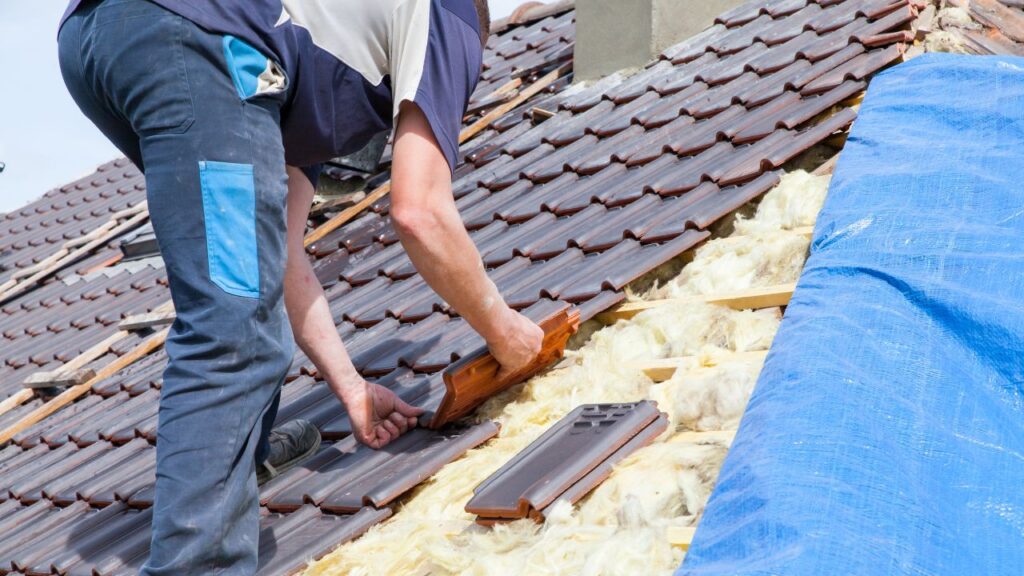
NASA’s Climate website states global temperature increases bring extreme heatwaves, storm surges, floods, and loss of human lives. It’s essential to adopt sustainable practices to reduce carbon footprint before it’s too late. Insulation materials not recyclable are like a one-night stand – a temporary solution that leaves a mess.
Insulation materials are important for keeping buildings warm. It is also important to consider their recyclability. Here are the different types and their recyclability:
Insulation Material | Recyclable? |
|---|---|
Fiberglass | Yes |
Rock wool | Yes |
Cellulose | Yes |
Spray foam | No |
Fiberglass, rock wool, and cellulose are all recyclable, whereas spray foam is not due to its chemical makeup. However, recycling insulation materials can cause degradation in quality.
An HVAC technician talked about how a homeowner replaced their air conditioning unit. This reduced energy consumption and costs. The old unit was recycled properly, contributing to the environment.
Working towards a healthy environment is like hitting the gym. It might seem tough at first, but it pays off in the long run.
Safety and health considerations are paramount when selecting insulation for your home. It is crucial to choose materials that will not harm your family’s health or safety. Harmful chemicals or volatile organic compounds (VOCs) can potentially cause respiratory problems or other health hazards.
When selecting insulation, it is essential to research the materials’ health and safety claims thoroughly. Many newer products make claims about being eco-friendly or having low VOCs. It is also critical to consider the installation process and associated risks. Some insulation materials require protective gear, and the installation process can be hazardous if not done correctly.
It is important to follow proper safety measures when handling and installing insulation. Wear protective clothing and goggles when installing insulation, especially fiberglass or mineral wool, as they can cause skin and respiratory irritation. It is also necessary to follow proper ventilation procedures during and after installation.
To ensure safety and health during insulation installation, it is recommended to hire a professional insulation contractor familiar with the materials and their potential hazards. They can also recommend the right materials for your home’s specific needs.
Choosing the right insulation is key to protecting your home from fire hazards, unless you’re going for that ‘burnt to a crisp’ aesthetic.
Maximize your insulation construction business’s potential with our competitive financing options

To stay safe from fire hazards, protection measures are a must. Fire-resistant materials and equipment, combined with employee training, can lower the risk of fire accidents.
Creating a fire safety plan is essential. This plan should cover regular electrical system, smoke detector, and sprinkler inspections. Emergency exits must be clear and easily accessible.
Training employees in fire safety is important too. They need to know how to operate firefighting equipment and how to safely evacuate the building in an emergency. Practicing drills will help everyone prepare for a real emergency.
Pro Tip: To protect even more, invest in an automatic fire suppression system. These systems detect and put out fires quickly, lessening damage and keeping personnel safe.
The air inside a building can affect the health and safety of those inside. Cleanliness, ventilation, and temperature all affect Indoor Environmental Quality (IEQ).
Maintenance of heating, cooling, and ventilation systems should be done regularly to prevent contamination. Plants can help purify the air of pollutants. However, chemicals from cleaning supplies or furniture can harm IEQ.
Storing and disposing of waste correctly is also important for IEQ. Poor maintenance, no ventilation, and moisture can lead to molds which harms IEQ.
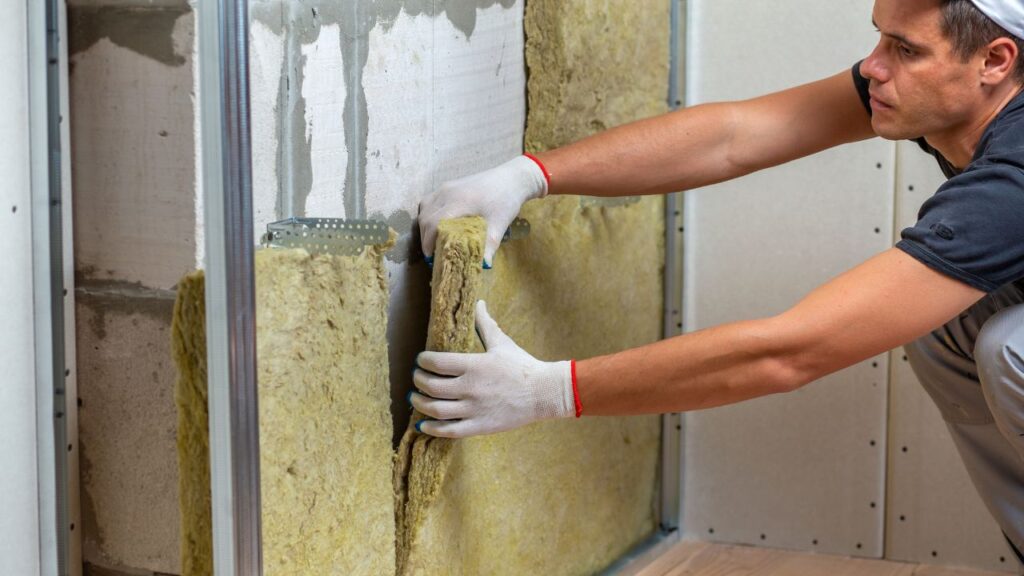
Recently, I visited a friend’s apartment complex. Even though it looked nice, the air quality was bad! Nobody wants to breathe polluted air daily. Property management needs to understand IEQ factors and work with maintenance teams to ensure quality air for occupants.
Safety and health in the workplace are essential for protecting employees’ respiratory concerns and allergies. Poor air quality, harmful materials, and environmental factors can all have a negative effect on workers’ respiratory systems, leading to health issues, productivity loss, or worse.
Employers should create strategies to protect workers, such as installing proper ventilation systems and using personal protective equipment. Regular air quality testing should also be conducted to detect possible allergens.
Moreover, employers may provide special accommodations to employees with pre-existing respiratory conditions or allergies. Examples include remote working or redesigned workspaces.
By implementing these strategies, employers can greatly reduce the risk of workplace-related respiratory system problems. It is vital that employers prioritize safety and take necessary actions to ensure the safety of all staff members.
To ensure proper insulation, it is important to consider the unique requirements of different areas of your home. Here are some factors to take into account when choosing insulation materials for specific parts of your house:
Area of Home | Factors to Consider |
Attic | Type and R-value of insulation, ventilation, air sealing |
Walls | Type of construction, cavity size, R-value of insulation, air sealing |
Floors | Type of construction, R-value of insulation, air sealing, moisture control |
Basement | Type of foundation, moisture control, air sealing, R-value of insulation |
It is important to note that certain areas of your home may require a combination of insulation materials such as fiberglass batts and blown-in cellulose. You should also always consult with a professional when considering insulation options for your home.
In addition to the factors listed above, it is important to consider the climate in your region, as well as your budget and personal preferences, when selecting insulation materials. By taking these factors into account, you can ensure that the insulation in your home is effective and efficient.
Insulation has been used in homes for centuries, with the ancient Greeks using cork as insulation for their homes. Today, with advancements in technology and material science, we have a wide range of insulation options available to us. By understanding the unique requirements of different areas of your home, you can choose the right insulation material to suit your needs and ensure maximum comfort and energy efficiency.
Insulating your attic is important, unless you enjoy feeling like you’re sleeping in a freezer with occasional roof leaks.

The roof needs proper thermal efficiency. Air sealing, filling cavities and covering exposed exterior areas is crucial. Doing this can improve the performance of heating and cooling systems.
The attic must be insulated for temperature and energy savings. It also helps with indoor air quality and the longevity of the structure. Fiberglass batting or blown-in insulation are popular choices.
Inadequate insulation can cause roof corrosion and ice dams. So, modern ventilation standards combined with efficient insulation are necessary for optimal health benefits from your home.
Pro Tip: Nobody wants to live in an ice cube, so insulate your walls too!
Appropriate Coverage for Exterior Wall
Insulation requirements demand the walls of a house be covered. This ensures maximum temperature control and reduces energy costs.
The Importance of Wall Insulation
Exterior wall insulation regulates indoor temperature. It stops heat loss. It’s essential to choose an appropriate insulating material and method. Consider factors like local climate and building codes.
Choosing the Right Insulation Material
Cost-effectiveness, thermal performance, durability, and ease of installation are key factors when selecting insulating materials for external wall coverings. Options include fiberglass batts, foam boards, cellulose insulation, and spray foam.
Don’t Miss Out on Savings!
Installing exterior wall insulation can reduce HVAC bills in summer and winter months. Working with a professional contractor ensures maximum savings and peace of mind.
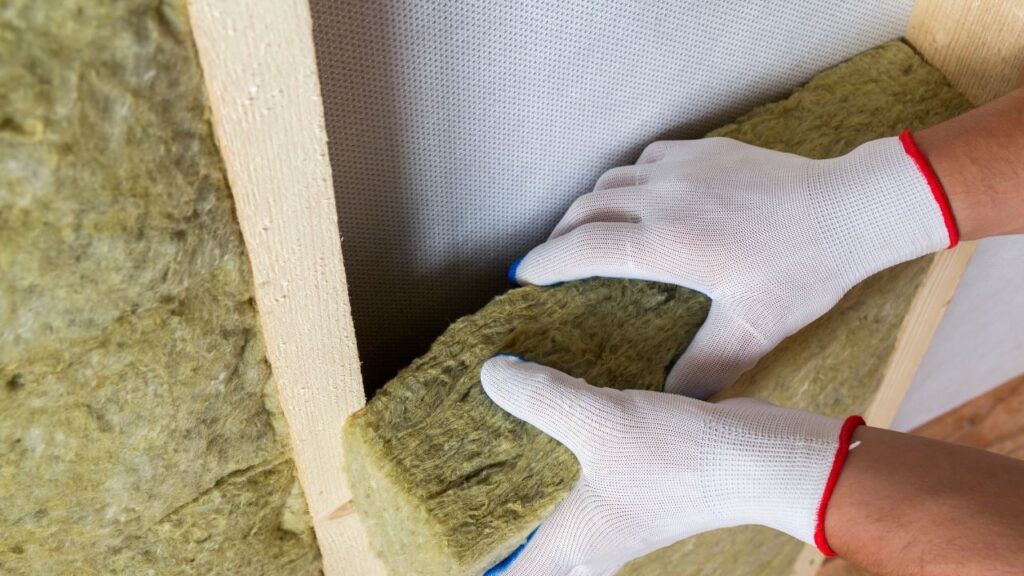
Give your Basement a Warm & Fuzzy Feeling
Why leave your basement feeling cold and neglected? Proper insulation can give it a warm and fuzzy feeling.
Insulating the area beneath your home can help maintain indoor temperatures and increase energy efficiency. Plus, it’ll protect against moisture. Quality insulation in the basement or crawl space can lower energy costs and keep HVAC systems running smoothly. The right type of insulation will keep your house cozy all year. It’ll also save energy and prevent moisture damage.
When insulating your basement or crawl space, pick the material that’s best for you. Some materials are more moisture-resistant than others, which is important in damp areas like a basement. Installing a vapor barrier system can prevent moisture from damaging insulation and causing mold.
You can either DIY your insulation or hire professionals. DIY is cheaper, but pros make sure every inch is covered and working properly. The US Department of Energy states that basements and crawl spaces are usually poorly insulated. So, insulating them can make your house more comfortable and reduce energy bills!
Garages are ideal for storing vehicles and other items. So, it’s important to install insulation, to protect possessions and maintain consistent temperatures.
Remember, garages need less insulation than living spaces. So, check with local building codes to comply. Also, insulation helps regulate temperatures, but it doesn’t guarantee protection from extreme weather. So, consider other measures for further protection.
Keeping a house in good condition is like sustaining a relationship – it requires effort and an occasional plumber!
Sustaining the efficiency of your insulation involves regular maintenance and upkeep. It is essential to ensure the insulation is not damaged, compressed or disturbed in any way. Properly sealed doors and windows help maintain the insulation’s performance.
Periodic inspection of insulation is vital to detect any potential damage or issues, such as leaks or moisture buildup. Additionally, by keeping the attic or crawl space well-ventilated, you can prevent mold and mildew growth, prolonging the life of your insulation.
It is crucial to maintain the insulation’s thickness, as compressed insulation loses its effectiveness in regulating temperatures. Therefore, homeowners should avoid placing objects on top of insulation or using it for storage.
According to the US Department of Energy, around 45% of a home’s energy bill is attributed to heating and cooling; proper insulation maintenance and upkeep can significantly reduce this cost.
In summary, to maintain your insulation’s efficiency, regular inspection, ventilation, and thickness maintenance is crucial. By following these practices, homeowners can sustain their insulation’s effectiveness and save on energy costs. Maintaining your insulation may seem like a chore, but it’s better than waking up to a bedroom resembling an igloo.
Maintaining good quality & performance of insulation is key for efficient operation. Here is a 4-step guide to inspect & maintain it:
For proper insulation functioning, regular maintenance is necessary. Monitor it regularly for extended lifespan & reduced energy costs.

We must look at all elements that contribute to effective inspection measures, beyond checking dampness/damages. This includes regular evaluations, monitoring, hazard assessments & detailed examinations.
Insulation has evolved from animal hides as clothing to heated homes with modern technologies providing comfort through thermal regulation. Insulation may not be flashy, but replacing it can result in great outcomes!
Insulation is a must for every building and needs regular maintenance. Updating or replacing it can help you save energy and lower heating/cooling costs. Depending on the complexity, you may need a pro’s help.
Start by examining your insulation. Check for signs of moisture or mold growth that can reduce its efficiency. Going green? Use recycled materials to keep your home safe.
Good ventilation is also important. Poor ventilation can lead to too much moisture and damage.
Note: Before 1980s, asbestos-based insulation was used in many homes. It’s hazardous to human health, so get it removed by pros if you find it.
Maintaining your home is similar to brushing your teeth; don’t wait ’til something breaks down before fixing it!
Consider all your options. Think about the climate, budget, and needs of your home. Consult a professional for expert advice. Weigh the pros and cons before deciding. Certain materials may be costly initially, but save you money in energy costs in the long run.
Insulation isn’t the only way to improve energy efficiency and reduce your carbon footprint. Air sealing, ventilation, energy-efficient appliances, and lighting are also important strategies.
Do research on what materials are available. There’s sure to be something that meets your needs. It may seem daunting, but if you consider all factors and research ahead of time, you’ll be on the path to a comfortable, energy-efficient home with a reduced environmental impact.
Insulation helps regulate the temperature inside your home, keeping it cool in the summer and warm in the winter. It also helps reduce the amount of energy needed to heat and cool your home, saving you money on utility bills.
There are several types of insulation available, including fiberglass, cellulose, spray foam, and rigid foam. Each has its own advantages and disadvantages depending on your specific needs and budget.
The R-value measures the ability of the insulation to resist heat transfer. The higher the R-value, the better it will perform. You should consider factors such as your climate, local building codes, and your budget when determining the R-value you need.
While it is possible to install insulation yourself, it is often best to hire a professional. They have the expertise and specialized equipment to ensure the job is done correctly and safely.
The lifespan of insulation varies depending on the type and quality of the insulation, as well as the conditions in which it is installed. However, most insulation is expected to last at least 20-30 years.
The cost to insulate your home depends on several factors, including the size of your home, the type of insulation you choose, and the complexity of the installation. On average, homeowners can expect to spend between $1,500 and $4,000 to insulate their home.
Here I am going to share some steps to get your insulation construction cost estimate report.
You can send us your plan on info@estimatorflorida.com
Before starting your project, we send you a quote for your service. That quote will have detailed information about your project. Here you will get information about the size, difficulty, complexity and bid date when determining pricing.
We do insulation construction cost estimating and prepare a detailed report for your project. At last you finalize the report and finish the project.
561-530-2845
info@estimatorflorida.com
Address
5245 Wiles Rd Apt 3-102 St. Pete Beach, FL 33073 United States
561-530-2845
info@estimatorflorida.com
Address
5245 Wiles Rd Apt 3-102 St. Pete Beach, FL 33073 United States
All copyright © Reserved | Designed By V Marketing Media | Disclaimer
IMPORTANT: Make sure the email and cell phone number you enter are correct. We will email and text you a link to get started.
By clicking “I Agree” above you give Estimate Florida Consultin express written consent to deliver or cause to be delivered calls and messages to you by email, telephone, pre-recorded message, autodialer, and text. Message and data rates may apply. You are able to opt-out at any time. You can text STOP to cancel future text messages.